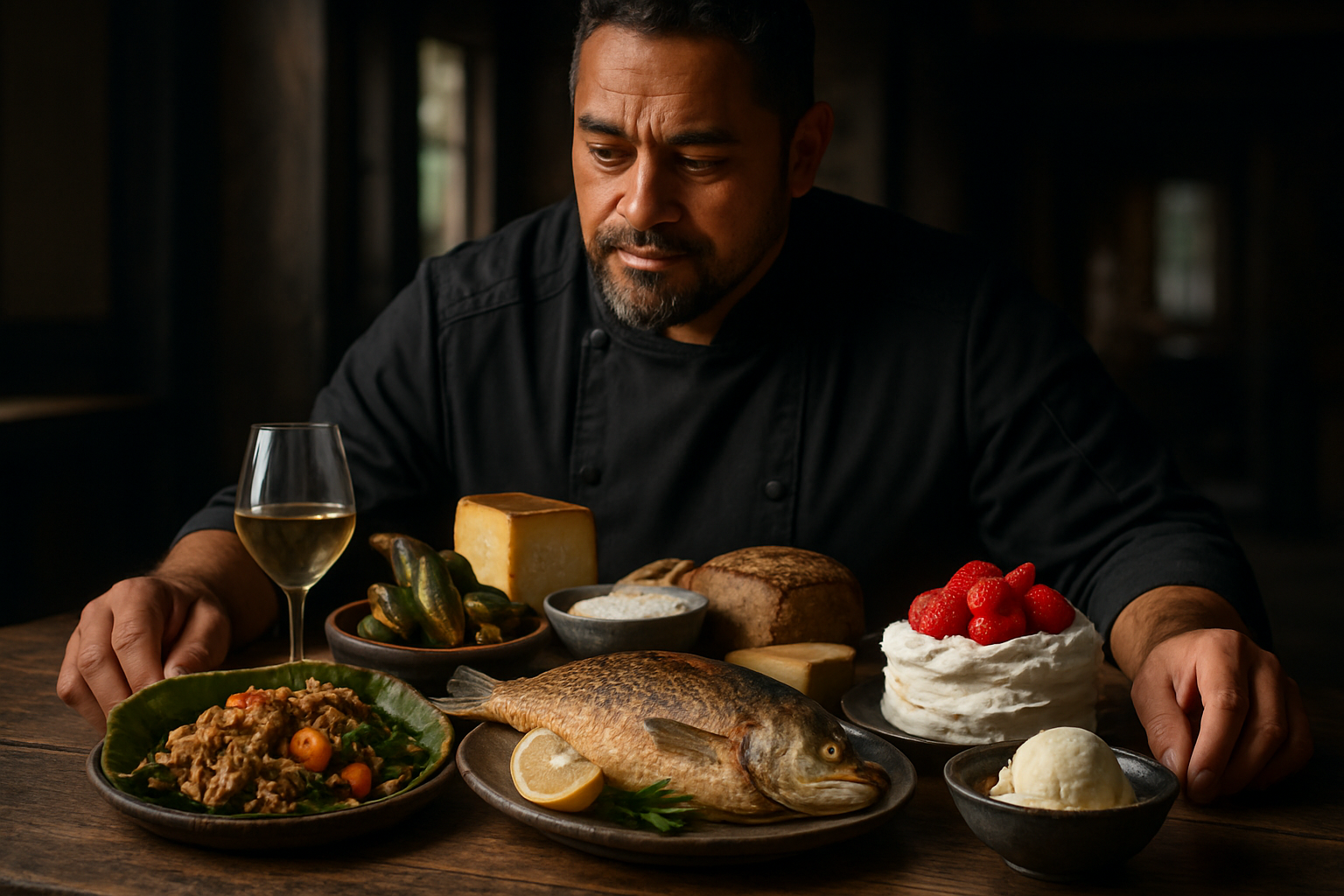Culinary Alchemy: The Art of Flavor Pairing
Embark on a gastronomic adventure that will revolutionize your approach to cooking. Discover the science and creativity behind flavor pairing, unlocking a world of taste sensations that will elevate your culinary creations. From classic combinations to unexpected twists, this journey will transform your kitchen into a laboratory of delicious experimentation.

Unexpected Duos: Pushing Culinary Boundaries
Venturing beyond traditional pairings, innovative chefs are constantly discovering new and exciting flavor combinations that challenge our preconceptions about food. One such unexpected duo is chocolate and blue cheese. While it might sound bizarre, the rich, creamy texture of blue cheese complements the deep, complex notes of dark chocolate, creating a luxurious and indulgent experience. Another surprising pairing is watermelon and feta cheese. The sweet, juicy melon contrasts beautifully with the salty, tangy feta, resulting in a refreshing and balanced dish perfect for summer. These unconventional pairings demonstrate that culinary creativity knows no bounds. By embracing the unexpected, we can create dishes that not only taste incredible but also provide a unique sensory experience. The key is to approach flavor pairing with an open mind and a willingness to experiment, allowing our taste buds to guide us towards new and exciting gastronomic territories.
The Role of Texture in Flavor Pairing
While flavor is undoubtedly crucial in culinary pairings, texture plays an equally important role in creating a memorable dining experience. The interplay between different textures can elevate a dish from good to extraordinary. Consider the classic combination of smooth, creamy peanut butter with crunchy, tart apple slices. The contrast in textures creates a sensory journey that engages not just our taste buds, but our entire palate. Similarly, the pairing of crispy bacon with soft, melting brie cheese offers a delightful textural contrast that enhances the overall flavor profile. When experimenting with flavor pairings, it’s essential to consider how different textures can complement or contrast with each other. A dish that incorporates a variety of textures – creamy, crunchy, chewy, and crispy – can provide a more complex and satisfying eating experience. By paying attention to texture alongside flavor, we can create dishes that are not only delicious but also exciting to eat, engaging all of our senses in the process.
Cultural Influences on Flavor Pairing
Flavor pairing is not just a modern culinary technique; it’s deeply rooted in cultural traditions around the world. Different cuisines have developed unique flavor combinations over centuries, reflecting local ingredients, climate, and cultural preferences. For example, in Thai cuisine, the balance of sweet, sour, salty, and spicy flavors is fundamental, often achieved through combinations like lime and chili or coconut and lemongrass. In contrast, Italian cuisine often pairs tomatoes with basil, a combination that has become iconic worldwide. Exploring these cultural flavor pairings can provide inspiration for our own culinary experiments and help us understand the historical and geographical context of different taste combinations. Moreover, as our world becomes increasingly interconnected, we see a fascinating fusion of flavors across cultures, leading to innovative dishes that blend traditional pairings with modern techniques. By embracing these cultural influences, we can expand our culinary horizons and create dishes that tell a story of global connection through flavor.
Beverage and Food Pairing: A Holistic Approach
The art of flavor pairing extends beyond the plate to include beverages as well. The right drink can enhance, complement, or contrast with a dish, creating a holistic dining experience. While wine pairing is perhaps the most well-known example, the possibilities extend far beyond. Consider the bright, citrusy notes of a gin and tonic paired with a rich, creamy pasta dish – the acidity of the drink cuts through the richness of the food, cleansing the palate between bites. Or imagine a robust coffee paired with a slice of dark chocolate cake, where the bitterness of both elements creates a harmonious and indulgent combination. Even non-alcoholic beverages can play a crucial role in flavor pairing. A sparkling water infused with herbs can refresh and enhance the flavors of a light salad, while a sweet, fruity iced tea can balance out the heat of spicy dishes. By considering beverages as an integral part of the meal, we can create a more complete and satisfying dining experience, where each sip and bite complement each other perfectly.
Useful Tips & Facts
• The “flavor pairing hypothesis” suggests that ingredients sharing flavor compounds are more likely to taste good together.
• Umami, often described as savory or meaty, can enhance other flavors when paired correctly.
• Contrasting flavors (sweet and salty, for example) can create exciting taste experiences.
• Aroma plays a crucial role in flavor perception – consider how ingredients smell together.
• Temperature can affect flavor pairings – some combinations work better hot, others cold.
• Keep a flavor journal to record successful (and unsuccessful) pairings you’ve tried.
• Don’t be afraid to experiment – some of the best flavor discoveries happen by accident!
As we conclude our exploration of flavor pairing, remember that the world of taste is vast and ever-evolving. The principles and examples discussed here are just the beginning of a lifelong culinary journey. By understanding the science behind flavor combinations, embracing unexpected pairings, considering texture, respecting cultural influences, and integrating beverages into our approach, we can transform every meal into an exciting adventure. So, let your creativity run wild in the kitchen, trust your palate, and don’t be afraid to push the boundaries. Who knows? You might just discover the next great flavor combination that will revolutionize the culinary world. Happy experimenting!




